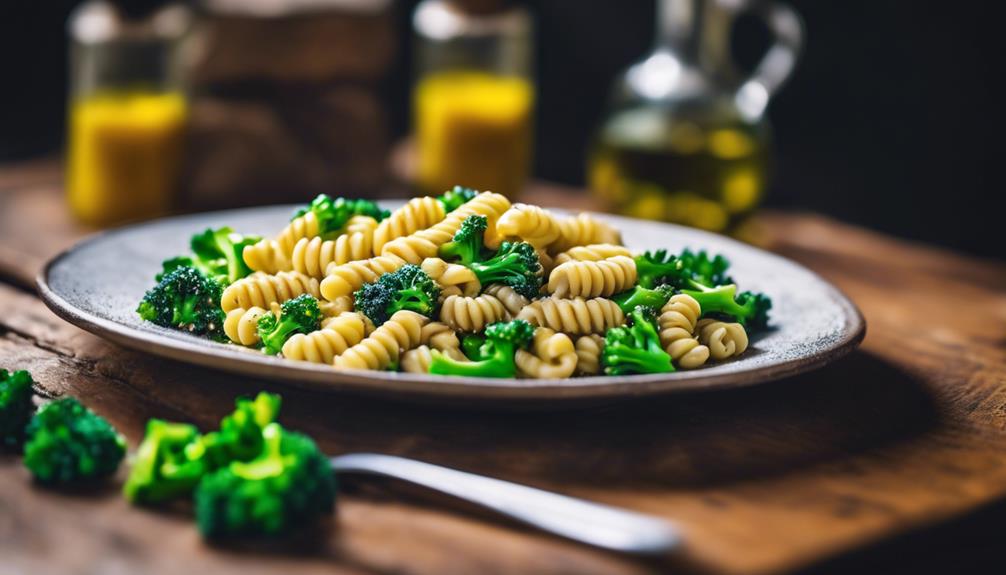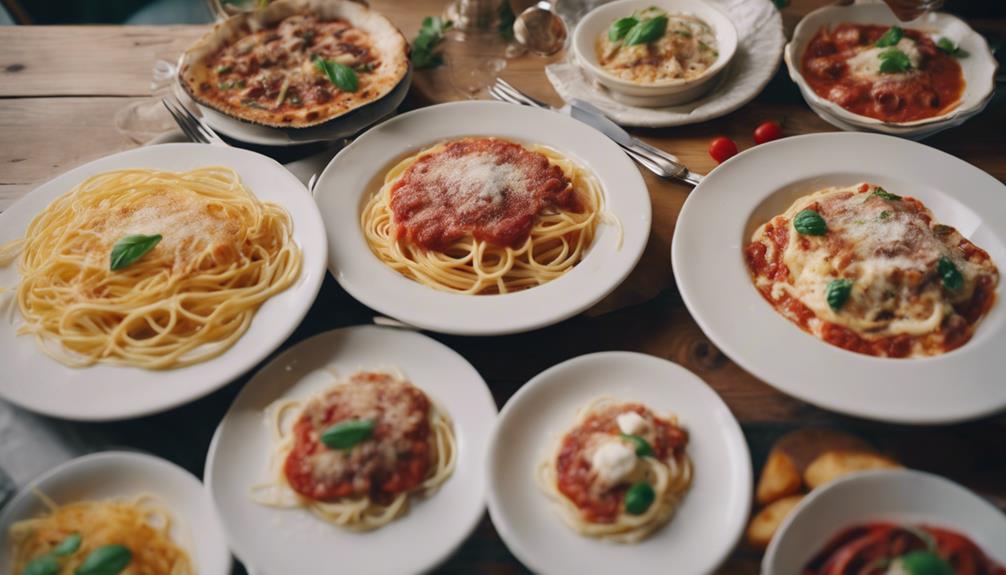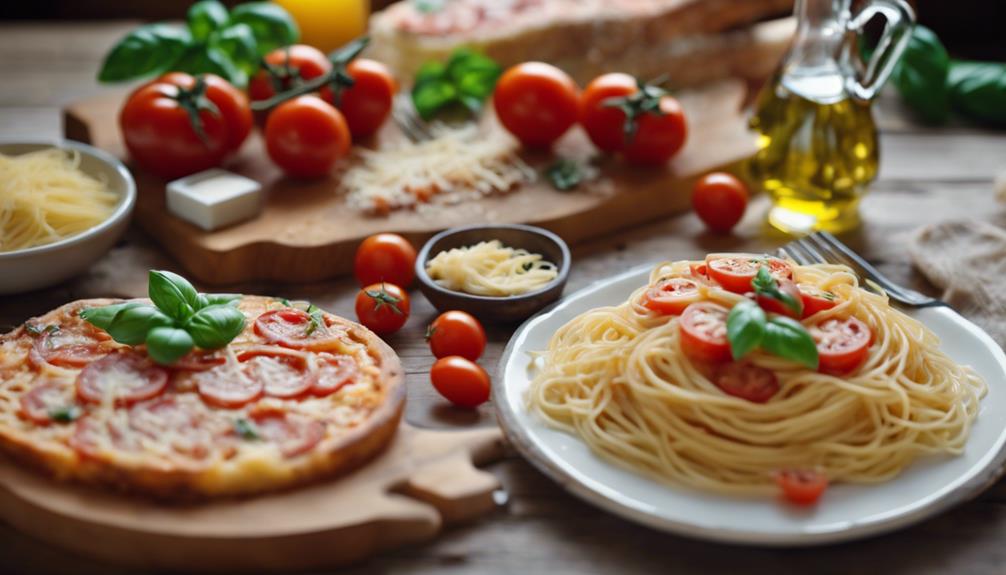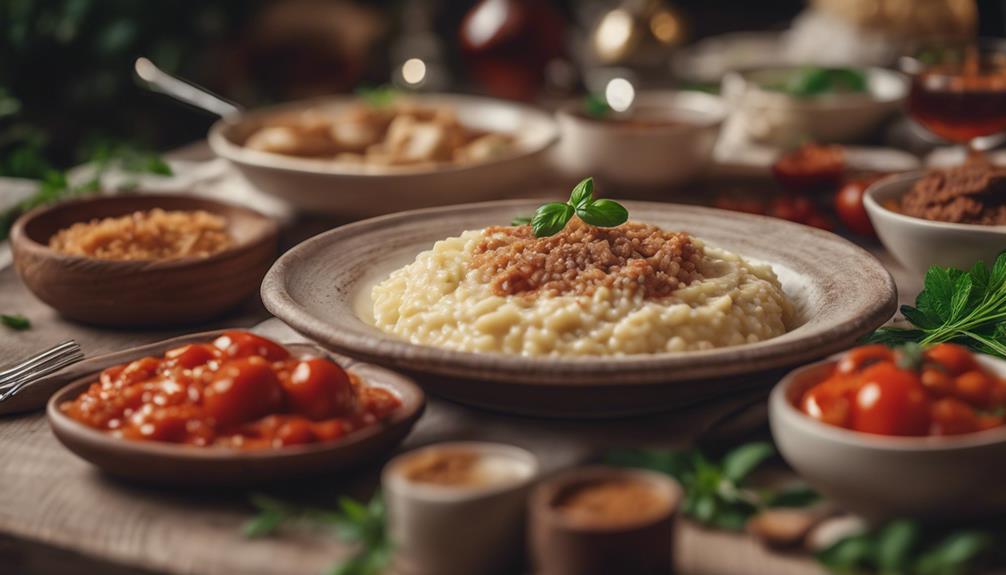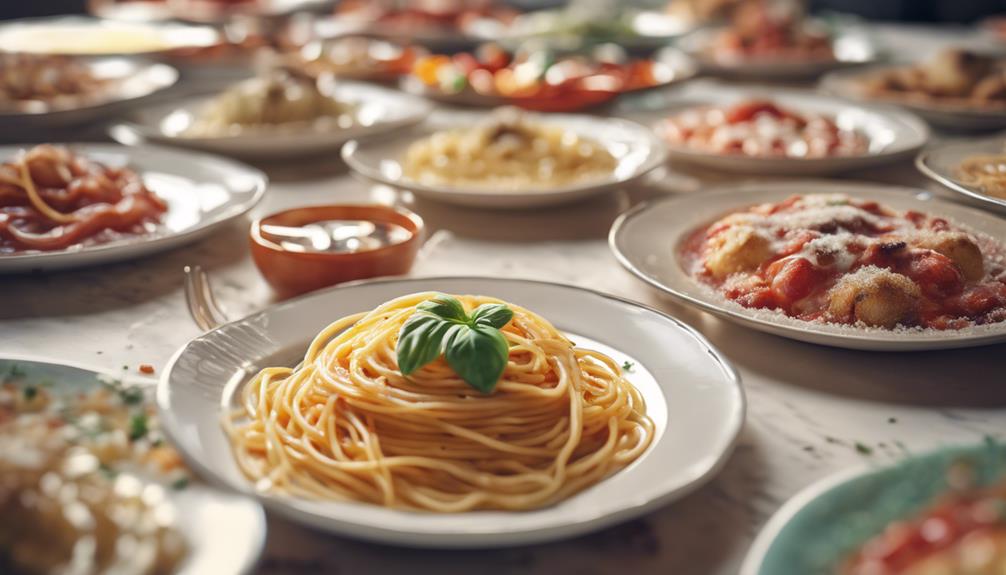Embark on a culinary journey with Cavatelli and Broccoli, a traditional Italian dish full of delicious flavors. Cook the cavatelli al dente and combine with fresh broccoli, garlic, Romano cheese, and red pepper flakes for a tasty meal. Discover the nutritional benefits of broccoli, which is packed with essential nutrients and antioxidants. Pair your dish with wines like Pinot Grigio or Sauvignon Blanc to enhance your dining experience. Get creative by adding Parmesan cheese, garlic bread, or grilled proteins for different variations. Leftovers can be stored in the fridge for 3-4 days for a tasty second meal. Enjoy the wonderful blend of flavors and heritage that awaits your taste buds.
Key Takeaways
- Cook cavatelli al dente for perfect texture
- Fresh broccoli adds vibrancy and nutrition
- Sliced garlic enhances flavor when sautéed
- Romano cheese and red pepper flakes for finishing touch
- Let natural flavors of cavatelli and broccoli shine
The History of Cavatelli
Explore the origins of cavatelli pasta, a beloved Italian culinary staple with a rich history in Southern Italy. Cavatelli, deriving its name from the Italian word 'cavare,' meaning to hollow out, is a traditional pasta shape that has been cherished for generations.
This pasta's humble beginnings can be traced back to Southern Italy, where its unique shape, resembling small shells with hollow centers, became a favorite among locals. Made simply with semolina flour and water, cavatelli is a tribute to the beauty of Italian cuisine's simplicity and reliance on quality ingredients. Its lack of eggs sets it apart from many other pasta varieties, showcasing a more rustic and traditional approach to pasta-making.
The history of cavatelli is a tribute to the resourcefulness and creativity of Southern Italian cooks, who crafted this pasta shape to be not only delicious but also versatile. From the rolling hills of Puglia to the bustling streets of Sicily, cavatelli has taken on different regional variations and names, highlighting the diverse culinary landscape of Southern Italy.
Ingredients for Cavatelli and Broccoli
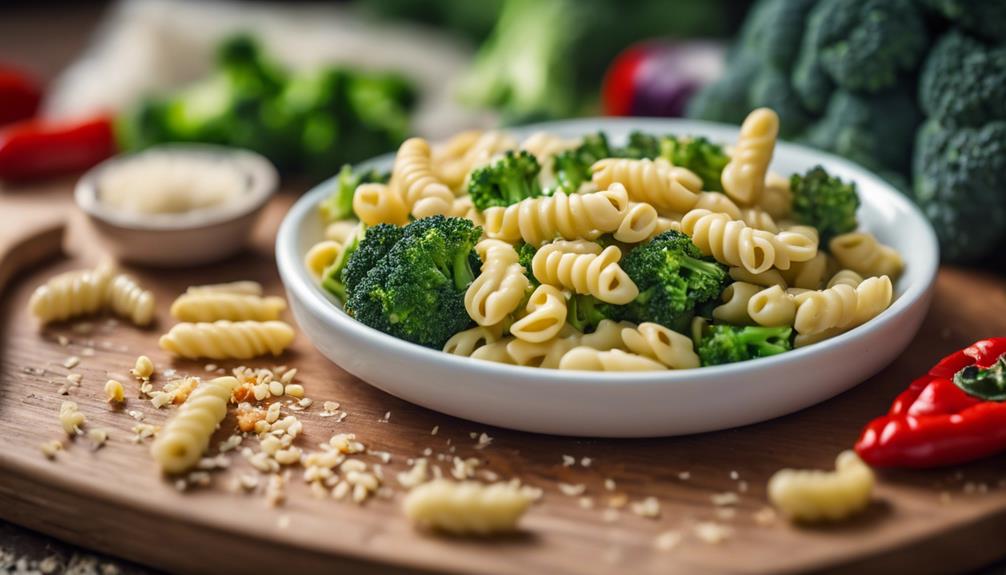
When preparing Cavatelli and Broccoli, it's important to cook the pasta al dente to guarantee the perfect texture.
Incorporating fresh broccoli adds a vibrant and nutritious element to the dish.
These points are vital to creating a flavorful and well-balanced meal.
Cooking Cavatelli Al Dente
To achieve the perfect texture for your cavatelli pasta, make sure it's cooked al dente. This means the cavatelli should be firm yet tender to the bite, providing an essential consistency for your dish.
When cooking cavatelli, using 1 pound of pasta is recommended, ensuring there's enough to serve multiple people or have leftovers for later enjoyment.
Sliced garlic plays a vital role in enhancing the flavor profile of the dish when sautéed in olive oil, adding a delightful punch to each bite.
Additionally, grated Romano cheese and crushed red pepper flakes can be sprinkled over the cooked cavatelli to create a cheesy and slightly spicy finish, elevating the overall taste experience.
Incorporating Fresh Broccoli
For a nutritious and vibrant twist to your Cavatelli and Broccoli dish, consider incorporating fresh broccoli as one of the key ingredients. Fresh broccoli, rich in essential nutrients like vitamin C, vitamin K, and fiber, not only enhances the visual appeal of the dish but also adds a healthy element to your meal.
To prepare this classic Italian dish, start by sautéing fresh broccoli florets in a drizzle of extra virgin olive oil. This high-quality olive oil will impart a rich flavor to the broccoli while keeping it tender-crisp.
When cooked properly, broccoli retains its bright green color and crisp texture, elevating the overall freshness of the dish. The combination of tender cavatelli pasta and broccoli creates a satisfying and balanced meal that's both flavorful and comforting.
Including fresh broccoli in the recipe adds a pop of color and contributes a delicious earthy flavor that complements the other ingredients perfectly. Try incorporating extra virgin olive oil into your Cavatelli and Broccoli dish for an authentic Italian touch that will delight your taste buds.
Health Benefits of Broccoli
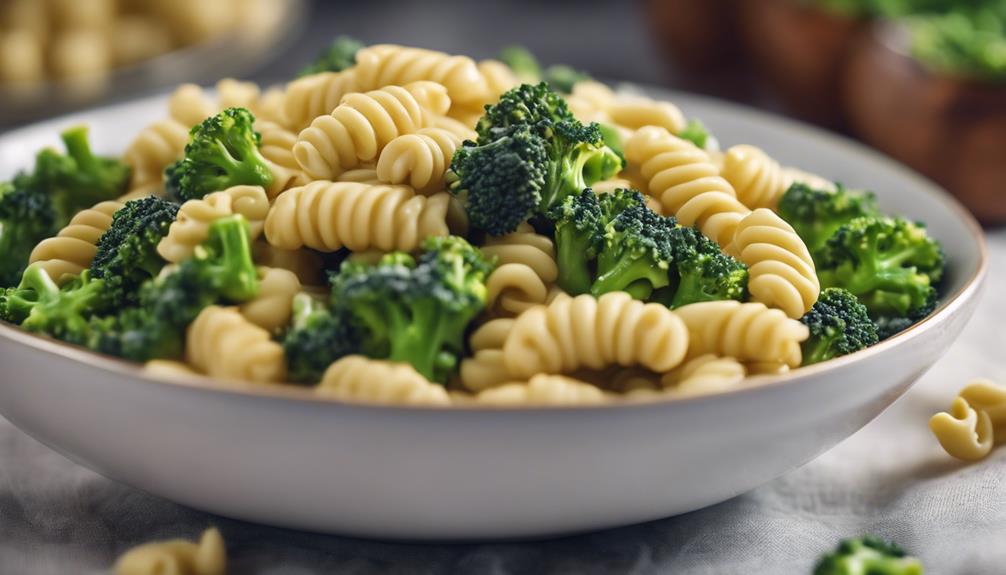
Broccoli is a powerhouse vegetable, packed with essential nutrients like vitamin C, K, and A, along with fiber and antioxidants. Including broccoli in your meals can boost your immunity and provide potential anti-cancer benefits due to compounds like sulforaphane.
Its impressive nutritional profile makes broccoli a valuable addition to your diet for overall health and well-being.
Nutrient-Packed Broccoli
Rich in essential nutrients and antioxidants, broccoli is a powerhouse vegetable that offers numerous health benefits. When combined with olive oil and garlic, broccoli not only becomes a flavorful dish but also a nutritional powerhouse.
This cruciferous vegetable is rich in vitamins C, K, and A, along with fiber and antioxidants, making it a valuable addition to your diet. Just one cup of cooked broccoli provides over 100% of your recommended daily intake of vitamin C, boosting your immune system and promoting skin health.
Broccoli's anti-inflammatory properties and potential cancer-fighting abilities have been widely studied, further highlighting its health benefits. The high fiber content in broccoli supports digestive health, aiding in digestion and helping maintain a healthy weight.
Broccoli for Immunity
Boost your immune system and enhance your overall health by harnessing the immune-boosting nutrients found in broccoli. Broccoli is a powerhouse of health benefits, containing essential vitamins and minerals like vitamin C, vitamin E, and antioxidants that play an important role in supporting your immune system.
Additionally, broccoli is rich in sulforaphane, a potent compound known for its anti-inflammatory properties, which can help your body fight off infections and stay healthy. This cruciferous vegetable isn't only low in calories but also high in fiber, promoting digestion and gut health.
Broccoli's Cancer-Fighting Properties
Incorporating broccoli into your diet can potentially contribute to reducing the risk of certain types of cancer due to its rich content of sulforaphane, a compound known for its cancer-fighting properties. Studies have indicated that sulforaphane in broccoli plays a vital role in preventing the development of specific types of cancer.
Additionally, broccoli is a great source of vitamin C, an antioxidant that boosts the immune system and promotes overall health. The high fiber content in broccoli aids in digestion and helps maintain a healthy gut.
Including broccoli in your diet may also contribute to reducing inflammation and lowering the risk of chronic diseases.
Cooking Cavatelli to Perfection
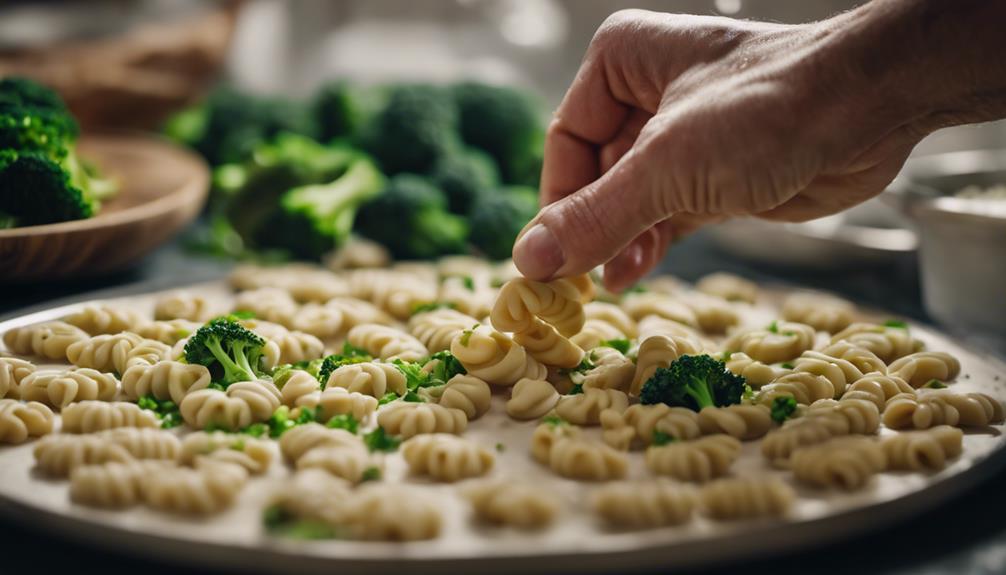
For perfect cavatelli every time, make sure you cook the pasta al dente to achieve the ideal texture and bite. Here's a guide to cooking cavatelli to perfection:
- Boil Water: Start by bringing a large pot of water to a rolling boil. Remember, properly salted water is crucial to seasoning the cavatelli as it cooks.
- Add Cavatelli: Once the water is boiling, add the cavatelli to the pot. Stir gently to prevent sticking and ensure even cooking.
- Monitor Doneness: Keep an eye on the cavatelli as it cooks. The pasta should be tender but still have a slight firmness when bitten. Overcooking will result in a mushy texture.
- Test for Readiness: To determine if the cavatelli is done, taste a piece. It should offer a slight resistance (al dente) without being hard. Once it reaches this point, drain the pasta promptly.
Flavorful Additions to the Dish
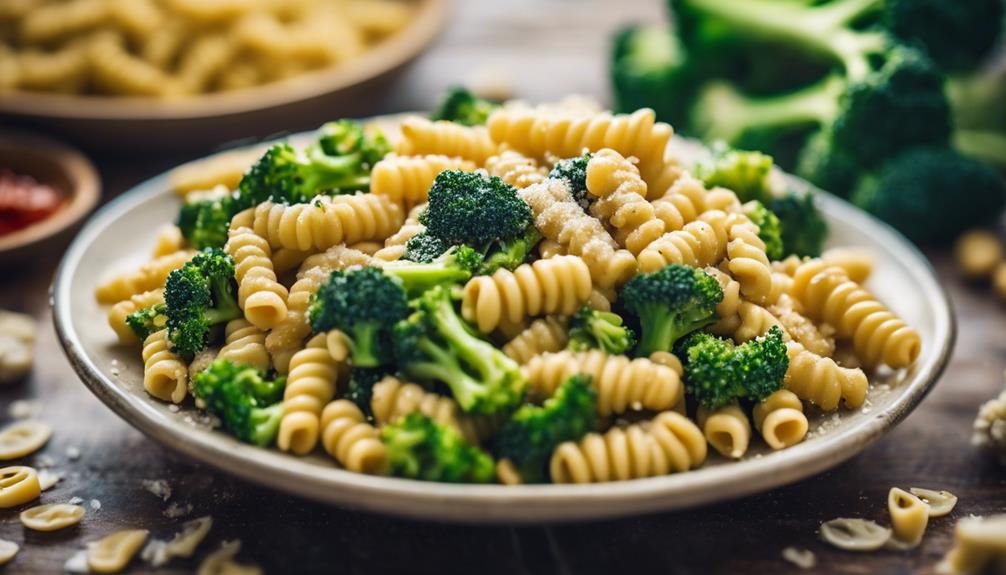
Enhance the taste of your Cavatelli and broccoli by adding flavorful ingredients like crushed red pepper flakes and grated Romano cheese. The red pepper flakes provide a spicy kick, elevating the overall flavor profile of the dish. When combined with the salty and savory notes of grated Romano cheese, each bite becomes a delightful explosion of taste.
The addition of garlic, olive oil, and red pepper flakes creates a rich and aromatic base that sets the stage for the main ingredients to shine through.
Adjusting the seasoning with salt and pepper allows you to customize the taste according to your preferences, ensuring that every mouthful is perfectly tailored to your liking. The simplicity of these ingredients allows the natural flavors of the Cavatelli and broccoli to be the star of the show, making each bite a delightful experience for your taste buds.
Pairing Wine With Cavatelli
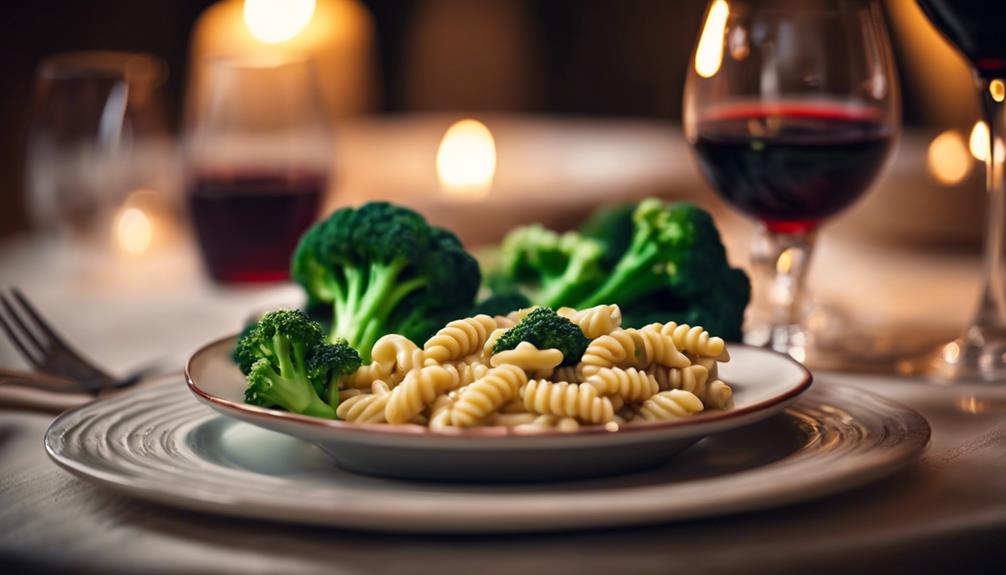
Consider pairing wine with your Cavatelli and broccoli to elevate your dining experience and complement the flavors of the dish. When choosing a wine to accompany this Italian classic, opt for light to medium-bodied white wines such as Pinot Grigio or Sauvignon Blanc to enhance the freshness of the broccoli.
If red wine is your preference, a light-bodied option like Pinot Noir can harmonize well with the dish. The acidity and herbal notes present in these wines can effectively balance the richness of the pasta and cheese in the cavatelli.
Experimenting with different wine pairings can introduce a new dimension to the traditional cavatelli and broccoli experience, allowing you to discover unique flavor combinations that enhance your enjoyment of this beloved dish. Wine plays an important role in enhancing the overall dining experience, making it a delightful addition to your meal.
Tips for Serving Cavatelli and Broccoli
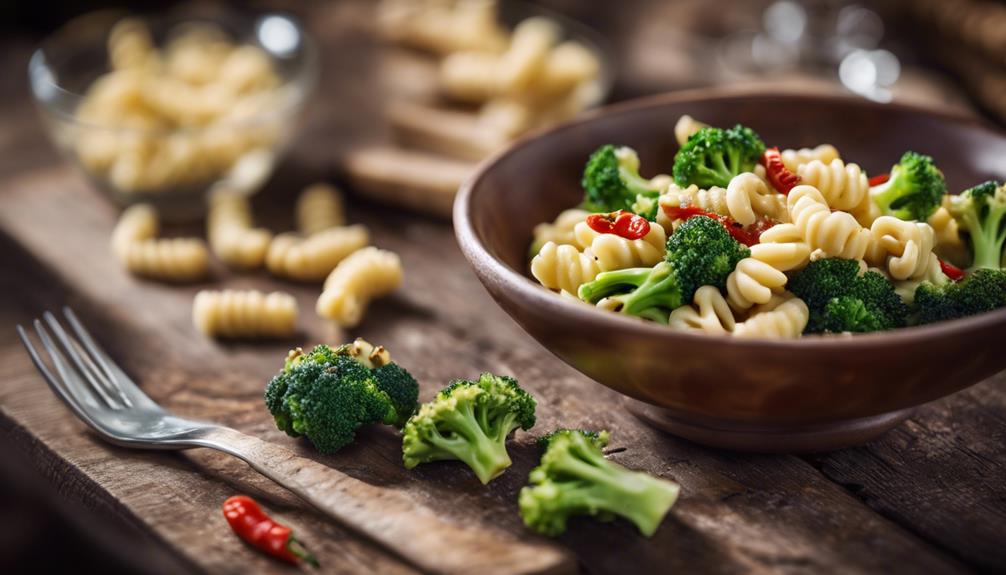
Adding a sprinkle of grated Parmesan cheese to your Cavatelli and Broccoli can enhance its flavor profile and provide a delightful finishing touch.
This classic Italian dish is further elevated when served alongside garlic bread, which complements the flavors of the pasta and broccoli.
For those who enjoy a bit of heat, consider incorporating a pinch of crushed red pepper flakes to your Cavatelli and Broccoli for a spicy kick.
To make the dish more substantial and satisfying, think about adding a protein such as grilled chicken or shrimp.
Garnishing your Cavatelli and Broccoli with fresh parsley or basil not only adds a pop of color but also infuses the dish with a touch of freshness.
Variations of Cavatelli Recipes
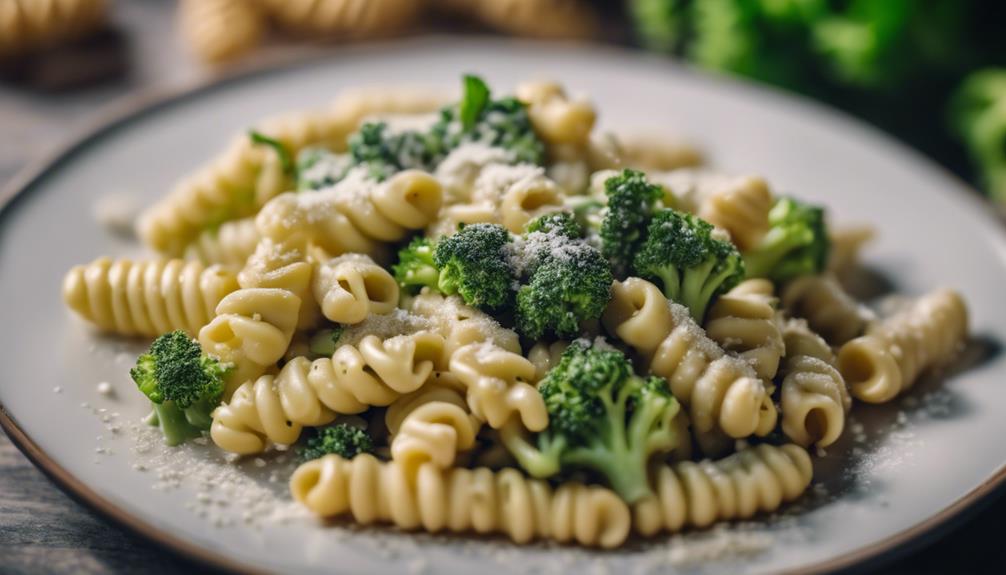
Explore the diverse array of Cavatelli recipes available, each offering unique twists on this traditional Italian pasta dish.
- Broccoli and Garlic Infusion: Enhance your cavatelli with a savory blend of sautéed broccoli florets and garlic, creating a fragrant and wholesome dish.
- Creamy Broccoli Alfredo: Indulge in a rich and creamy cavatelli preparation by adding a velvety broccoli Alfredo sauce, marrying the flavors of cheese and vegetables seamlessly.
- Broccoli and Sausage Medley: Elevate your cavatelli with a burst of flavors by incorporating spicy Italian sausage and broccoli for a hearty and satisfying meal.
- Broccoli Pesto Delight: Experience a burst of freshness with a vibrant broccoli pesto sauce coating your cavatelli, offering a delightful fusion of herbaceous and nutty notes.
These variations showcase the versatility of cavatelli recipes, allowing you to tailor your dish to suit your culinary preferences, whether you prefer a creamy texture, a spicy kick, or a burst of freshness from the broccoli.
Storing Leftover Cavatelli and Broccoli
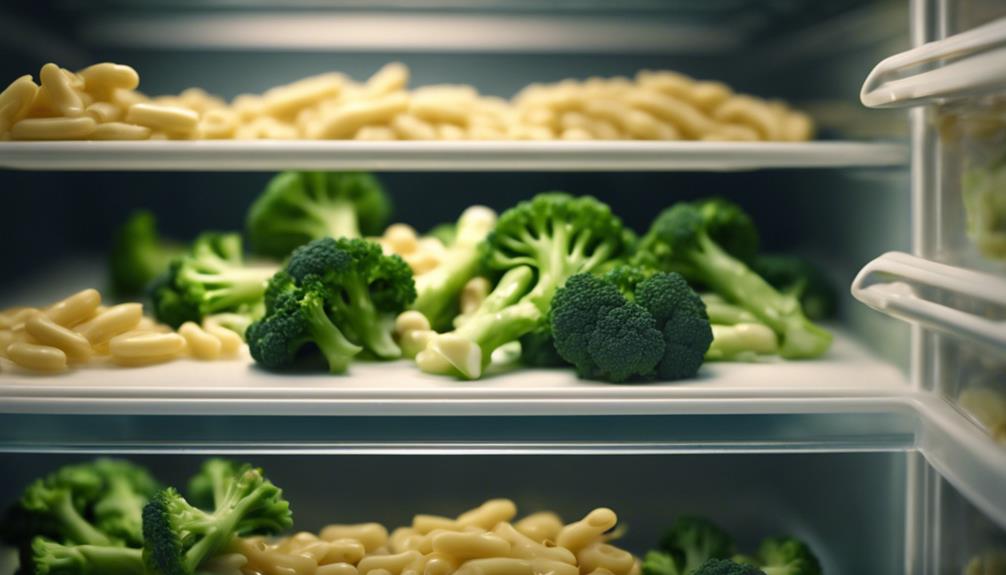
Store any leftover cavatelli and broccoli together in an airtight container in the refrigerator for up to 3-4 days. It's crucial to make sure that the container is sealed tightly to maintain freshness and prevent any odors from permeating the food.
When reheating the leftover cavatelli and broccoli, place them in a microwave-safe dish and heat in short intervals, stirring in between, until they're warmed through. For a more enhanced flavor profile during reheating, consider sautéing the leftovers in a skillet with a small amount of olive oil or butter until adequately heated.
It isn't recommended to freeze leftover cavatelli and broccoli, as the texture may suffer and become mushy upon thawing. Instead, repurpose these leftovers creatively by incorporating them into dishes like frittatas, soups, or salads for a quick and delicious meal option.
Frequently Asked Questions
How Do Italians Say Cavatelli?
Italians say cavatelli as 'kah-vah-TELL-ee,' emphasizing the second syllable. This popular pasta shape in Italian cuisine is known for its unique shape and texture. Enjoy it with various sauces and ingredients for a delicious meal.
What Part of Italy Is Cavatelli From?
Oh, you're curious about where cavatelli is from? Well, let's enlighten you! Cavatelli pasta hails from Southern Italy, particularly regions like Puglia, Campania, and Basilicata. It's a true taste of Italian tradition!
What Is Another Name for Cavatelli?
Another name for cavatelli is gavadeels among Italian Americans while in Southern Italy, it can be called parmarieddo or pizzicarieddi. With about forty regional names, it's a versatile pasta loved in various ways.
What Does Gavadeel Mean?
Gavadeel means 'little hollows,' describing the scooped shape of each shell. It's a term used by Italian Americans to refer to Cavatelli pasta. In Southern Italy, Cavatelli goes by names like parmarieddo and pizzicarieddi.
Can Cavatelli and Broccoli be made as a vegan dish?
Yes, Cavatelli and Broccoli can absolutely be made as a vegan Italian dish. By using alternative ingredients such as vegan pasta made from semolina flour and water, and replacing cheese with nutritional yeast, it is easy to create a delicious plant-based version of this classic dish. Explore new flavors with vegan Italian dishes.
Conclusion
To sum up, cavatelli and broccoli is a timeless Italian dish that offers a perfect balance of flavors and nutrients.
Whether you're a fan of traditional recipes or looking to add a new dish to your repertoire, this classic combination is sure to satisfy your taste buds.
Stay tuned for more delicious recipes and culinary inspiration to elevate your cooking experience.
Happy cooking!
